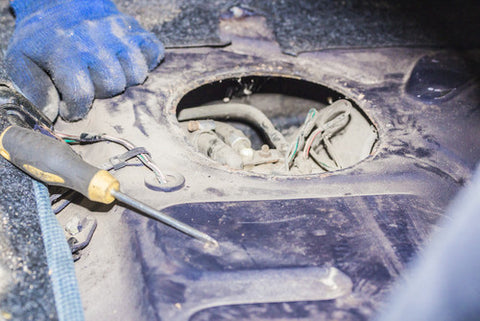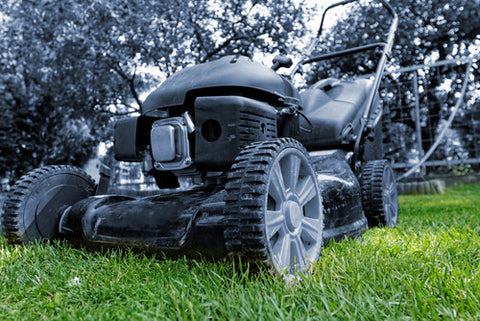So, summer is almost officially over. The kids are back in school, the weather is starting to cool down, and the trees are starting to change color. This means that it’s also time for you to be able to finally put away that lawn mower and other yard equipment. That’s right; no more mowing the lawn every other weekend. Now, before you go tossing your mower and trimmers into the shed and doing a little happy dance, there are some things you should do first to properly winterize your mower.
While it is tempting to just toss your yard care equipment in the shed and forget about them until next spring, taking the time to do your end of the season maintenance will prevent a lot of headaches. Your stuff is going to be spending the winter sitting around, and that means without proper winterization, you might get stuck come next spring. These steps apply not just to lawn mowers, but to any equipment with a small two or four-stroke engine.
Step One: Take Out the Gas
The first step to winterize your mower is removing the gas from the mower’s tank. Use a siphon to remove the gas to avoid spills. Gas left in your engine over the winter will turn gummy as the hydrocarbons in the gas dissipate, causing your motor to struggle to burn it next season. If the engine is a 2-stroke model (meaning you add oil to the gas), dispose of the gas properly. If you have a 4-stroke model, the gas can be added to your car or truck and used normally. Once you’ve drained the tank, start the mower and let it idle until it stops on its own. This ensures that no gas remains in the lines. Once this is done, disconnect your spark plug so there’s no chance of the engine starting while you work on the undercarriage.
Step Two: Take Care of the Underside

Your lawn mower blade has seen a lot this season. When was the last time you had it sharpened? Rather than wait until the springtime rush when everyone is trying to get their blades sharpened, get it done now. When removing the center bolt, make sure to wear good work gloves to avoid injury.
After the blade is off, clean the undercarriage. When you tilt your mower to access the underside, make sure the air filter is facing upward to prevent gas or oil from contaminating it. The best tools for this job are a putty knife and a stiff brush. Get all the caked on dirt and grass off and rinse it clean. Dry it thoroughly to prevent rusting.
The next step is to change the oil (if you have a 4-stroke engine). Drain the oil into a pan and dispose of it properly. Replace the oil plug and refill the engine with a 30-weight oil.
Step Three: Take Care of the Top

The next step when you’re winterizing your mower is to clean the rest of the mower. Use a clean cloth to wipe off the deck and engine cover. Use compressed air to clean out the crevices, getting any clippings or dirt out of the way. Dirt and grass trap moisture against the metal, leading to rusting and other damage.
Take care of the air filter next; Remove the paper filter and change it completely. Clean out the filter casing with a clean rag before you put the new one in. Remove the sponge filter (if you have one) and wash it with warm water and soap. Let it air dry for 24 hours and add a few drops of engine oil to the sponge before replacing it.
The last step before you’re done is to replace the spark plug. Before you install the new plug, use a set of feeler gauges to ensure that your new plug is gapped correctly. If you aren’t sure, or you don’t own a feeler gauge kit, ask someone at the hardware store to check for you. The proper gap measurement for you mower can be found in your user manual. A proper gap is essential to ensuring your mower’s engine fires correctly.
Once all of this is taken care of, you can store your mower knowing that it will be ready to go in the spring with just some minor steps. Hanging your mower is a great way to store it for the winter. It keeps it off the ground and away from moisture. Store the blade separately to prevent accidental injury. If you store your mower on the ground, use a pallet to elevate it off the ground to prevent moisture from being trapped. Come spring, the only things you need to do to get going are reattach the mower blade and put fresh gas in the tank.
Proper winterization of your lawn mower is a vital part of maintenance. With proper maintenance, your lawn mower will last several years, running at peak performance. What tips do you have for winterizing your mower? Let us know in the comments below.


